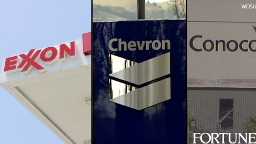Presentation
The Ranked Within Industries section in the magazine lists only companies in the Fortune 500. However, all the Fortune 1,000 companies are listed on the Fortune 500 online. Please note that Fortune lists industry breakouts when there are at least two companies in the industry; if there is only one company, it is listed under Miscellaneous. Three industries have only one member ranked within the Fortune 500 but have two or more members when the Fortune 1,000 companies are included. Therefore those three companies appear under Miscellaneous in the magazine but will appear in their respective industries online. Those companies are identified in a footnote on Ranked Within Industries.
MethodologyCompanies are ranked by total revenue for their respective fiscal years. Included in the survey are U.S. incorporated companies filing financial statements with a government agency. This includes private companies and cooperatives that file a 10-K or a comparable financial statement with a government agency, and mutual insurance companies that file with state regulators. It also includes companies that file with a government agency but are owned by private companies, domestic or foreign, that do not file such financial statements. Excluded are private companies not filing with a government agency; companies incorporated outside the U.S.; and U.S. companies owned or controlled by other companies, domestic or foreign, that file with a government agency. Also excluded are companies that failed to report full financial statements for at least three quarters of the current fiscal year.
RevenuesRevenues are as reported, including revenues from discontinued operations when published. If a spinoff is on the list, it has not been included in discontinued operations. The revenues for commercial banks and savings institutions are interest and noninterest revenues. Revenues for insurance companies include premium and annuity income, investment income, and capital gains or losses but exclude deposits. Revenues figures for all companies include consolidated subsidiaries and exclude excise taxes. Data shown are for the fiscal year ended on or before Jan. 31, 2009. Unless otherwise noted, all figures are for the year ended Dec. 31, 2008.
ProfitsProfits are shown after taxes; after extraordinary credits or charges, if any, that appear on the income statement; and after cumulative effects of accounting changes. Figures with a - in front indicate a loss. Profit declines of more than 100% reflect swings from 2007 profits to 2008 losses. Profits for real estate investment trusts, partnerships, and cooperatives are reported but are not comparable with those of the other companies on the list because they are not taxed on a comparable basis. Profits for mutual insurance companies are based on statutory accounting.
Balance SheetAssets are the company's year-end total. Stockholders' equity is the sum of all capital stock, paid-in capital, and retained earnings at the company's year-end. Redeemable preferred stock whose redemption is either mandatory or outside the company's control is excluded. Dividends paid on such stock have been subtracted from the profit figures used in calculating return on equity.
Market ValueThe market-value figure shown was arrived at by multiplying the number of common shares outstanding by the price per common share as of March 27, 2009. If companies have more than one class of shares outstanding, and an equivalent share number is not available, the respective market values for each share class are combined.
Earnings Per ShareThe figure shown for each company is the diluted earnings-per-share figure that appears on the income statement. Per-share earnings are adjusted for stock splits and stock dividends. They are not restated for mergers, acquisitions, or accounting changes. The only change to the prior year's EPS is for a significant restatement due to reporting errors that require a company to file an amended 10-K. Though earnings-per-share numbers are not marked by footnotes, if a company's profits are footnoted it can be assumed that earnings per share is affected as well. The five-year and 10-year earnings-growth rates are the annual rates, compounded.
Total Return to InvestorsTotal return to investors includes both price appreciation and dividend yield to an investor in the company's stock. The figures shown assume sales at the end of 2008 of stock owned at the end of 1998, 2003, and 2007, respectively. It has been assumed that any proceeds from cash dividends and stock received in spinoffs were reinvested when they were paid. Returns are adjusted for stock splits, stock dividends, recapitalizations, and corporate reorganizations as they occur; however, no effort has been made to reflect the cost of brokerage commissions or of taxes. Total-return percentages shown are the returns received by the hypothetical investor described above. The five-year and 10-year returns are the annual rates, compounded.
MediansNo attempt has been made to calculate the median figures in the tables for groups of fewer than four companies. The medians for profit changes from 2007 to 2008 do not include companies that lost money in 2007 or lost money in both 2007 and 2008, because no meaningful percentage changes can be calculated in such cases.
CreditsThis Fortune 500 Directory was prepared under the direction of senior list editor L. Michael Cacace and senior reporter Richard K. Tucksmith. Income statement and balance sheet data were reviewed and verified against published earnings releases, 10-K filings, and annual reports by reporter Douglas G. Elam and accounting specialists Rhona Altschuler and Lora Martens. Market specialist Kathleen Smyth used those same sources to check the data for earnings per share. In addition, she used data provided by SunGard FAME to calculate total return and market capitalization. Database administrator Larry Shine provided technical support. Mark Frawley and Viki Goldman assisted with the data gathering and verification. The data verification process was aided by information provided by Standard & Poor's Compustat; SNL Financial; A.M. Best; Hoover's; Thomson Financial; and 10K Wizard.
ContactsIf you have further questions about the Fortune 500, please e-mail lists@cnnmoney.com.
-
 Exxon Mobil shoved aside Wal-Mart to retake the No. 1 slot. But the Fortune 500 had its worst slump ever. Watch
Exxon Mobil shoved aside Wal-Mart to retake the No. 1 slot. But the Fortune 500 had its worst slump ever. Watch -
The group harnesses the power of Fortune 500 brand names to fight disease in Africa. Watch
-
Centerpoint, a partner of IBM, No. 14 on the Fortune 500, is using technology to make the power grid smarter. Watch
-
The social network offers companies new ways to reach customers. Will it make the Fortune 500 someday? Watch
-
No. 29 on the Fortune 500, J&J invests for the long term in people and research. Watch
-
 The San Francisco-based bank, No. 41 on the Fortune 500, faces growing pains integrating with Wachovia. Watch
The San Francisco-based bank, No. 41 on the Fortune 500, faces growing pains integrating with Wachovia. Watch
| Rank # of Fortune 500 Companies | |
|---|---|
| Texas | 64 |
| New York | 56 |
| California | 51 |
| Company | Rank |
|---|---|
| Valero Energy | 10 |
| Microsoft | 35 |
| Goldman Sachs | 40 |
| Company | 2008 $ (millions) |
|---|---|
| Exxon Mobil | $45,220.0 |
| Chevron | $23,931.0 |
| Microsoft | $17,681.0 |







